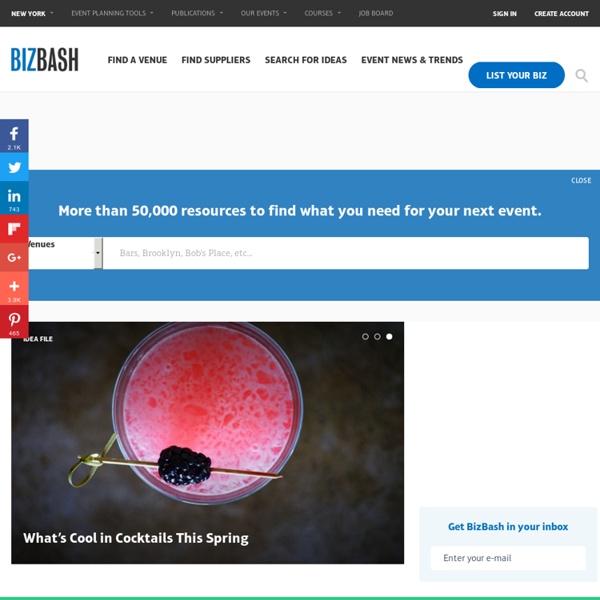



Thisispaper Shop - What we save, saves us. 5 Ways an Event Can Impress the Most Tech Savvy Guests We’ve all seen them: those people at an event with the newest phone, tablet, or other high-tech gadget. We constantly hear people say, “hey, that’s cool!” or “wow, how does that work?” so how can event organizers impress this savvy crew of event goers? With today’s technology, there are a lot of different options that can get you brownie points at your next event. Here are a few tech tips that will impress any guest: 1. Imagine if when your guests approach the door right before an event, their ticket would show up automatically on their phone? 2. Get those savvy guests through the door quicker, and encourage them to save paper by using their phone as a ticket. 3. Create a custom event hashtag that your guests can use to tweet, instagram, or post on Facebook. On that social media note, you can also utilize your hashtag as a marketing tool prior to your event. 4. There are companies who will even create a customized app for your event! 5. About Uniiverse
Careers | swissnex Boston Project Leader for new “swissnex mobile” at the EXPO Astana 2017 in Kazakhstan swissnex Boston together with Presence Switzerland (PRS) is looking for a Project Leader for the new “swissnex mobile” at the EXPO Astana 2017 in Kazakhstan. It is a new, unique approach for swissnex to be part of the official Swiss Pavilion at a world exhibition. Deadline for application: November 12, 2015 swissnex Boston – Open Internship Position for 2016 swissnex Boston offers two (or more) internship positions for a period between 6 and 12 months, which provides young people an opportunity to gain valuable work experience in the challenging world of science, innovation, entrepreneurship, higher education and the arts: Internship in Science (in close collaboration with Dr. Internship in Entrepreneurship and Innovation (in close collaboration with Niccolo Iorno, Project Leader) Graphic Design Support PR Support: Documentation & Digital Media:
untitled La Fracture Française C’est désormais clair, il y a deux France. L’une est éduquée, l’autre non. Je ne parle pas de riches et de pauvres. D’intelligents et de limités. De racistes et de tolérants. Il y a une France qui a poussé ses études et/ou travaillé sa vigilance culturelle, et il y a l’autre, frappée par l’illettrisme, le décrochage scolaire, le divertissement de masse, projetée dans la précarité culturelle, sociale et économique. Cette idée a été confortée ce week-end en lisant l’article de l’Obs sur les électeurs du FN. Cette France non éduquée se retrouve dans des idées simples. Je vois dans ce constat deux points négatifs et un point positif. C’est donc une sorte de fracture civile (« guerre » ?) Pris en tenailles, les gens de tous horizons retrouveront le bon côté de la force, le côté positif de la France. J’y crois. *Quand je parle d’éducation, je ne parle pas forcément de diplômes mais de curiosité d’esprit, d’accès au savoir, d’environnement familial favorable, de possibilité de se cultiver.
7 Key LinkedIn Stats: When to Post, What to Post & How to Improve A quick glance at a chart of the Internet’s fastest-growing social networks reveals what you likely already knew (Instagram is growing like mad) and what might be a surprise: LinkedIn is the third-fastest-growing social network. We at the Buffer blog can vouch for LinkedIn’s growth as our blog has experienced a swell in LinkedIn referral traffic over the past year, up 4,000 percent from last year at this time. Part of that has to do with our emphasis on updates and sharing at LinkedIn, another part has to do with the popularity of LinkedIn contributing a larger audience and more eyes to our content. Together, these factors have made LinkedIn a great source of visitors for our blog, and I’d imagine you might see a similar impact on your own site. So the question becomes: How best to take advantage of this expanding interest in LinkedIn? 1. Econsultancy reported this gap based on a two-year research study involving 2 million monthly visits to 60 corporate websites. What this means: 2. 3.
Top 5 Snapchat Campaigns by Innovative Brands - Keyhole Blog Gone are the days when Snapchats were only flirty, semi-nude pics. Snapchat, the black sheep of the social media family, is now being picked up and experimented by brands all over the world. Snapchat has over 100 million daily users that send 400 million snaps every day – it’s not a surprise that companies are desperate to tap into Snapchat’s user-base. According to Sumpto’s study, 77% of college students use Snapchat daily! If your brand’s target audience is the younger audience, Snapchat is a platform worth considering. Here is a compilation of the best Snapchat campaigns by top brands. 1. World Wildlife Fund Snapchat campaign stirred the flames of animal lovers everywhere. According to Tuba Ugur, Communications Officer for WWF, “The urgency to act and Snapchat’s dynamic were the perfect match to disseminate our message for species. Results: In three days, they reached their donation target for the entire month. 2. 3. You snap? 4. 5.